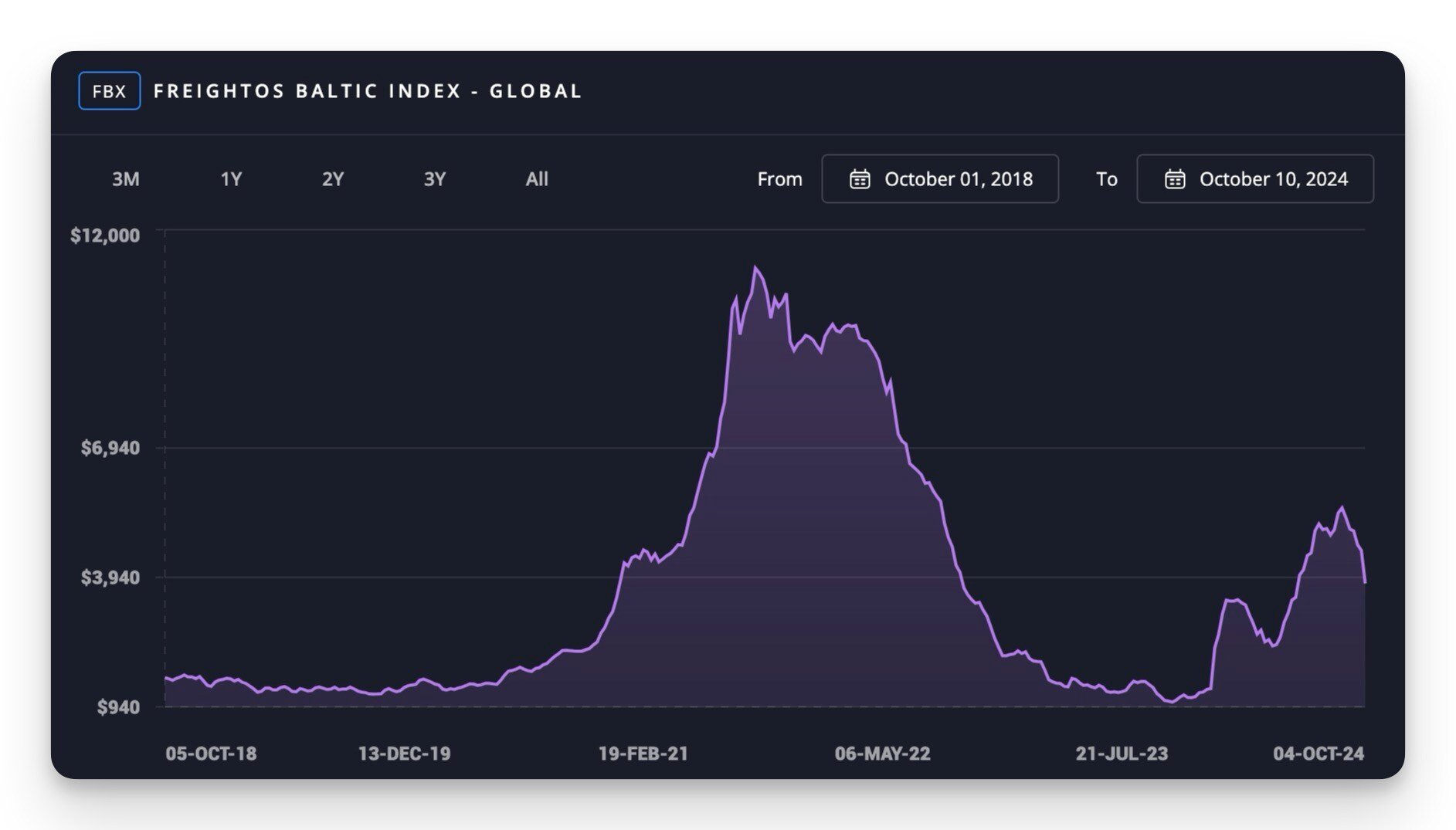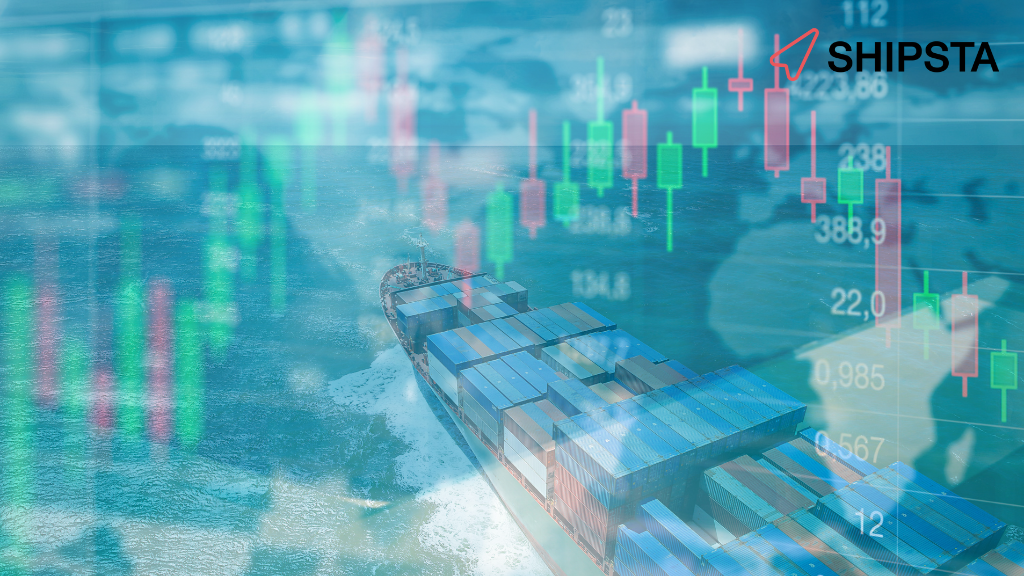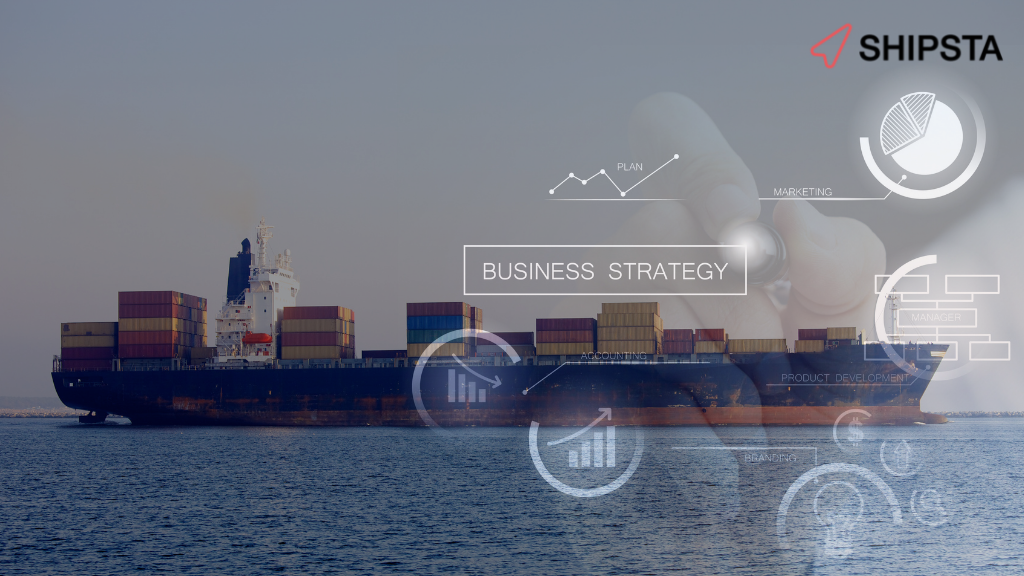In late 2021, I (together with the rest of the freight world) witnessed Trans-Pacific ocean freight rates skyrocket to $20,000 per FEU, up from $1,500 just 18 months earlier. This unprecedented volatility wasn’t an exception. Over the next four years, this volatility would stem from factors like:
- Overcapacity
- Bullwhip procurement
- Geopolitics (both Middle East and Europe)
- Tariffs
- Extreme weather
2021 didn’t invent volatility. But it did drive home the point that procurement professionals need to adapt quickly. It’s why supply chains were brought into the C-Suite and why top tier companies (like Apple) continue to bring in CEOs with supply chain backgrounds. They can adapt.
Source: https://www.apple.com/il/leadership/tim-cook/
The Volatile Freight Market in 2025: Our New Reality
For freight procurement pros, one key takeaway is that the contracts that were in place to protect from the volatility don’t always work. For example, as Judah Levine of Freightos shared in a recent webinar on taming procurement in 2025, the pandemic-induced freight market fluctuations led to extreme rate spikes and unreliable freight contracts.
So, according to Levine,:
"when rates climbed in 2020, BCOs had 34% of their contracted volumes rolled on average."
This volatility is our new normal, requiring innovative approaches to procurement.
So as we look towards 2025, here are five key strategies to help navigate the evolving landscape of freight procurement. I share these tips from two perspectives - both as a former tender manager at Kuehne + Nagel and, more recently, as the VP of Business Development at Shipsta, where I help procurement professionals leverage tech to improve their performance.
Here goes:
1. Embrace Data-Driven Procurement Decision-Making
Gone are the days when intuition alone could guide procurement decisions. The complexity of today's markets demands sophisticated data analysis. But non-digitized data, data that can’t be parsed (like PDFs and emails) or even disjointed platforms that are digitized but not connected can make things worse.
Focus on creating the correct infrastructure freight rate digitization. Audit your internal data and create a single source of truth. Ensure it actually works for freight - niche use cases like surcharges and fees - and then stress test it.
Once you’re there make sure that you:
- Invest in robust analytics tools. Gathering the data is useless without analysis.
- Train your team in data interpretation. Reduce dependency on the data analysts. Instead, focus on training your team to fish instead of catching them for them. Remember, Excel just doesn’t really cut it for global freight anymore.
- Develop data-driven KPIs beyond simple cost metrics. Some interesting use cases I’ve seen include ideas like partnership scores, on-time delivered rates, and frequency of rate changes.
2. Implement Dynamic Freight Pricing Contract Models
Long-term fixed rates are becoming liabilities in volatile markets. It’s not that they aren’t a good idea, it’s just that there are too many cases where they aren’t honored.
Source: Freightos
That’s why the industry is showing a trend towards more dynamic pricing models that allow for flexibility based on market conditions. These sometimes - but don’t always - require tech behind them. How?
- Develop flexible contract structures. Use concepts like built-in renegotiation milestones or emergency renegotiation situations that either side can play.
- Utilize index-based pricing. As long as you have access to an IOSCO-compliant index like the Freightos Baltic Index, you can negotiate a rate that is always market-appropriate,
- Implement regular rate reviews. Don’t do this often enough that it burns out your providers but make sure that you are exploring the market regularly.
3. Focus on Sustainability in Freight Procurement
Sustainability has evolved from a nice-to-have to a critical factor. As my colleague Christian Wilhelm shared in the webinar I mentioned above:
"Many shippers are increasingly focusing on sustainability and are interested in integrating CO2 information into their procurement process."
Again, data is king. Make sure you:
- Include emissions data in RFPs. If you are being held accountable, you need to know what you’re responsible for.
- Set clear sustainability targets. Paraphrasing Ridegway from 1956 - “what gets measured, gets managed.”
- Consider alternative transport modes. Ensure that you are able to seamlessly compare different modes of transport when assessing contracts and spot options to have the best possible result from an emissions perspective.
Source: Shipsta procurement platform
4. Leverage AI and Automation for Better Procurement
AI is revolutionizing freight procurement and 2025 is almost certainly going to bring more mature options for freight procurement. Yes, this can be a little buzzword laden and you need to tread with care but the opportunity is real. Imagine a BCO that can leverage AI for a rate refresh to the market so that once the AI identifies the opportunity for a 5% saving potential, they push an autonomous freight rate refresh to incumbent LSPs.
No touch, yes savings.
But, of course, AI isn’t a magic wand. So you’ll want to:
- Start with pilot projects for specific processes. Start slow, come up with core goals, and make sure you are working your way to them. Find the little things that can help, like using AI to find the best logistics providers when pushing out a freight tender.
- Invest in training for your team. Like before, without the right training, the best tech in the world becomes useless. Of course, some use cases, like machine learning for tendering, could be a pure backend concept that only the person who purchase the software needs to know about.
- Prioritize data quality. AI is a champ and fooling people into thinking they are getting substance. Garbage, garbage out.
5. Build Strategic Partnerships with Freight Providers
Surviving 2025 can’t just be about contracts or tech. Again and again, strong carrier relationships have proved to be crucial. When markets are volatile, you need someone on the inside to secure capacity. Tech doesn’t mean an alternative for a relationship; just like Facetiming kids while at a logistics conference in Asia, it can also mean a better way to communicate. So make sure you:
- Look beyond price when selecting partners. As my friend says “pay peanuts, get monkeys”.
- Invest in regular, open communication. When it comes to procurement digitization, leverage the time it’s saving to continue to keep open conversations. LSPs typically have a great read on the market that provide incredibly helpful data points to augment the pricing data you have. Take advantage!
Looking Ahead: The Future of Freight Procurement
As we approach 2025, stay curious, be willing to experiment, and collaborate across industries to stay ahead of the curve. That curiosity, together with what I mentioned above, should keep you well-equipped to thrive in the evolving freight procurement landscape of 2025 and beyond.
What steps are you taking to prepare for the future of freight procurement? Share your thoughts in the comments below.
Ready to elevate your freight procurement strategy? Get a demo of how Shipsta can help or connect with me on LinkedIn to chat!



